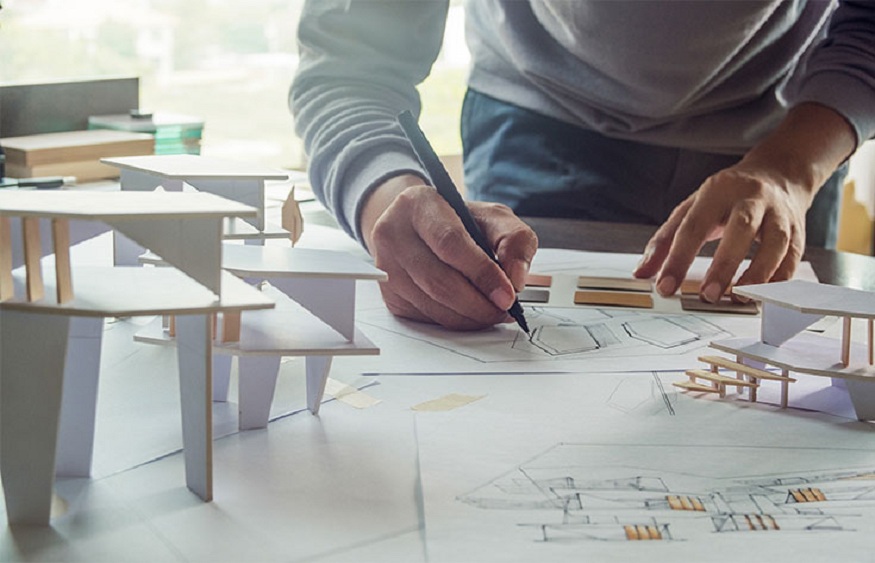Everyone is familiar with “3D modeling,” regardless of a company’s industry or market segment. The use of 3D modeling techniques has had a big impact on various industries recently. With 3D modeling, businesses can more easily visualize their products while also giving customers a clear idea of what the final product will look like.
The majority of the shortcomings connected with outdated procedures have also been solved by 3D modeling, which has enhanced general functionality throughout design organizations. Manufacturers order prototypes to experiment with them as they need to see a visual representation of the client’s concept when working on product development. Reducing the number of intermediate prototypes and streamlining the process overall are benefits of using 3D modeling for product creation.
What is 3D Modeling?
The technique of employing computer software to produce 3D photographs is known as 3D modeling. 3D models are made by 3D artists who manipulate vertices or points in a virtual environment to build a mesh.
Following are some of the ways in which 3D modeling services help hasten the creation of product designs:
1. Expedite Product Designing
In the past, creating a product design took considerable time. Revising the design, ordering a fresh prototype for each significant change, and then awaiting its arrival. Following the invention of 3D modeling, everything changed. When a manufacturer has to create a distinctive design, the customer will hire a skilled 3D artist to provide digital representations of their concept. As this eliminates the need to create multiple prototypes, product design companies can quickly and efficiently test out different ideas.
2. Modify Product Features in the Design Phase
Using 3D modeling, any product design company can dramatically adapt its processes. It becomes simpler for the artists to modify any component of the 3D object with the aid of 3D software. Any design element can be quickly added or removed, including proportions, geometry, materials, and textures.
3. Product Visualization
3D Models provide a clearer vision of how the product will appear, regardless of the industry – construction, manufacturing, or any other. On the other hand, product features and attributes can be modified during the design phase to check the functionality without waiting until the completion of the product design.
4. Improve Brand Recognition
By utilizing 3D modeling, businesses can improve their branding and get an advantage over competitors. A firm incorporating 3D elements will appear more advanced and sophisticated to customers.
5. Identify and Fix Errors in the Design Phase
A noteworthy benefit of 3D modeling in product design is that it helps identify design flaws early on without needing prototypes. One of the popular options is CAD conversion services, which not only help detect errors but also ensure that the product complies with the design. Additionally, 3D modeling enables 3D stimulation to identify faults and address problems with product design via intricate procedures. This is simple to accomplish using specialized software that only requires a CAD model.
6. Quick and Easy Prototyping
3D Modeling gives superior visualization that enables the user to preview the changes from any aspect. In contrast to traditional designing, which takes longer and is more difficult to create, 3D modeling enables the creation of subsequent versions in under 15 minutes. The well-known 3D design platforms’ exceptional user-friendliness shortens the software’s learning curve, reduces training time, and keeps teams more flexible.
7. Easy Collaboration
Collaboration between engineers, designers, and other stakeholders is not always simple or seamless. Every team member, whether technical or non-technical, can benefit from open communication by using 3D modeling as a reference point. The 3D visuals can be presented to all the participants, bringing everybody on the same page. Additionally, because 3D models are all recorded and stored in common file formats, any specialist can work on them without switching to different software.
8. Swiftly Incorporate the Latest Product Updates
Businesses must start looking for strategies to keep up with the rapidly changing needs of their customers. This can be accomplished with the aid of 3D modeling, as it simplifies the process of making prototypes and incorporating updates. This ultimately makes it easy for you to match the expectations of your target market.
Conclusion
3D Modeling is a terrific approach to enhancing product design while including the newest features throughout the design stage. A corporation can choose from a wide range of tools for its upcoming project because 3D modeling constantly evolves. Such modern technology not only improves product display but also benefits businesses.

 Create a Personalized Fitness Program with Tennessee Men’s Clinic
Create a Personalized Fitness Program with Tennessee Men’s Clinic  How to Choose the Right Lube Oil Pump for Your Machinery
How to Choose the Right Lube Oil Pump for Your Machinery  Zyon Grand and Promenade Peak: A New Way to Live in Luxury
Zyon Grand and Promenade Peak: A New Way to Live in Luxury  From Manual to Fully Automated: What a Go High Level Expert Can Do in Just One Week
From Manual to Fully Automated: What a Go High Level Expert Can Do in Just One Week  Skye at Holland: A Peaceful Getaway Close to Penrith
Skye at Holland: A Peaceful Getaway Close to Penrith  Portable Household Generators: The Eco-Friendly Power Solution for Your Home Garden
Portable Household Generators: The Eco-Friendly Power Solution for Your Home Garden  Should You Choose a Gold Loan Over a Personal Loan for Emergencies?
Should You Choose a Gold Loan Over a Personal Loan for Emergencies?  The Role of Fluoroscopy and Neuronavigation in MISS
The Role of Fluoroscopy and Neuronavigation in MISS  Ayurvedic Hair Oil: Nourish and Restore Your Hair’s Naturally
Ayurvedic Hair Oil: Nourish and Restore Your Hair’s Naturally 